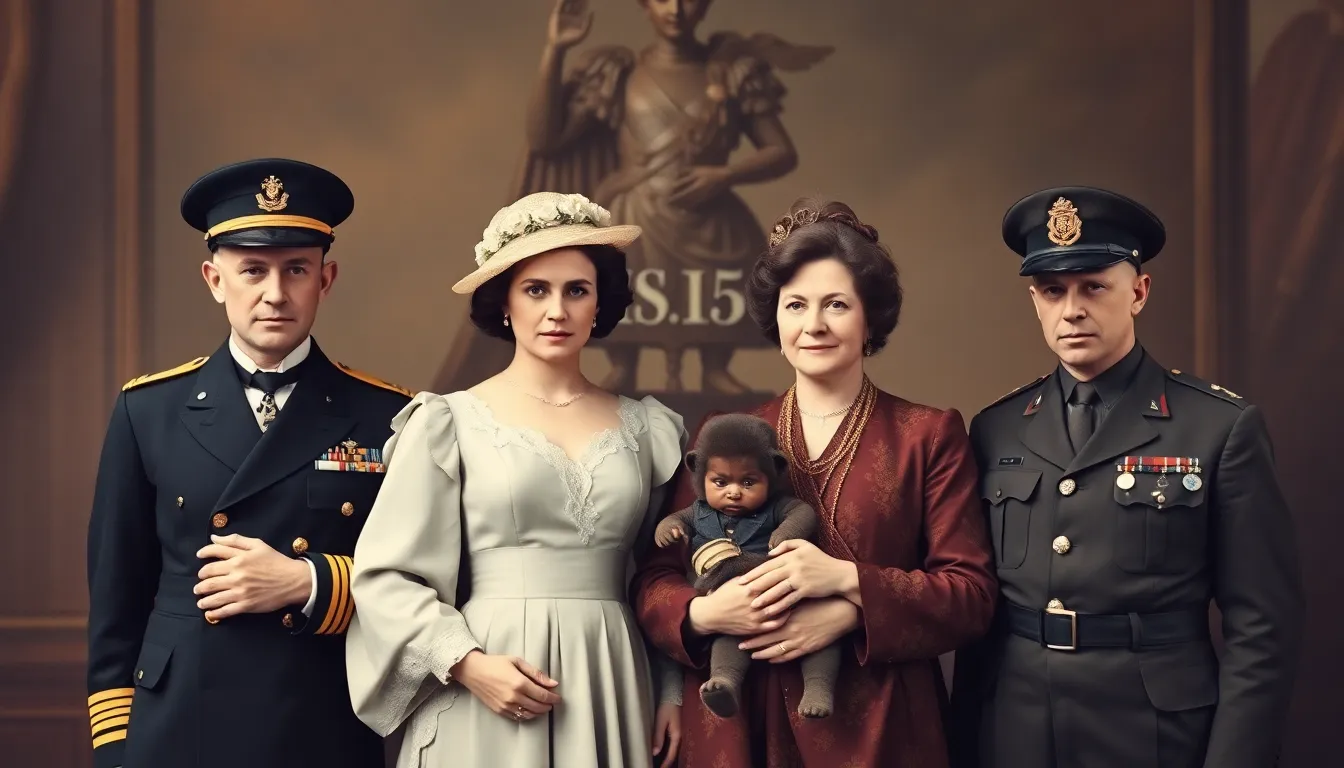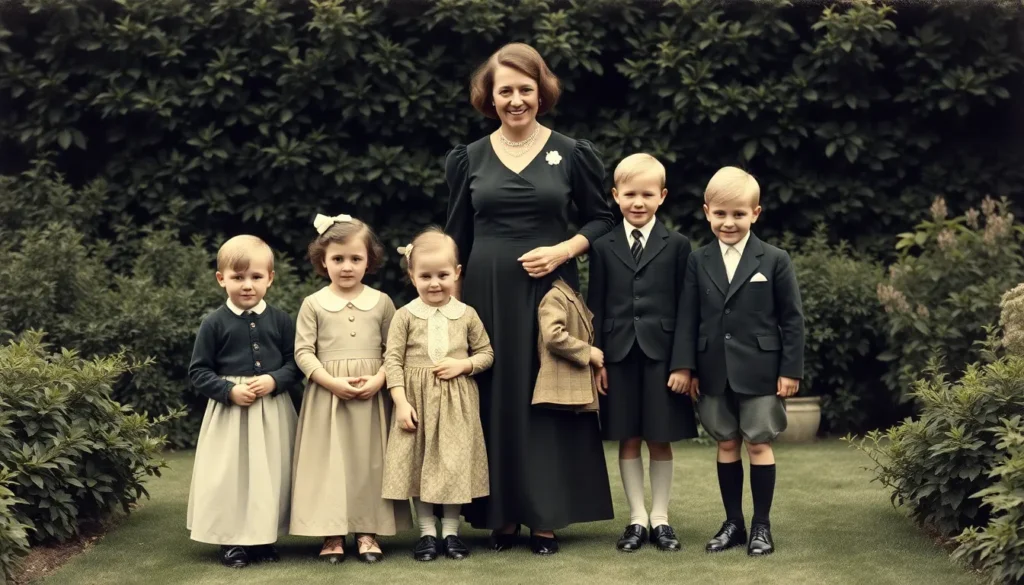Table of Contents
TogglePrincess Alice of Battenberg, a name that might not ring a bell, but her legacy certainly does! As the mother of notable figures in European royalty, her children played pivotal roles in shaping history. Imagine a family tree that branches out into the royal courts of Britain, Greece, and beyond. Talk about a royal family reunion that could rival any soap opera!
With a blend of charm and resilience, Alice raised her children in a world filled with both privilege and turmoil. Each child brought their own unique flair to the royal stage, from groundbreaking humanitarian efforts to scandalous love stories. Dive into the fascinating lives of Princess Alice’s children and discover how they navigated the complexities of royal life with a touch of humor and a lot of heart.
Overview of Princess Alice of Battenberg
Princess Alice of Battenberg, born on April 25, 1885, in Windsor, England, emerged as a notable figure in British royal history. Her lineage traced back to Queen Victoria and Prince Albert, which positioned her in influential circles. Alice married Prince Louis of Battenberg in 1903, thereby connecting her to the Battenberg family, which played a significant role in European aristocracy.
Alice and Louis had four children: George, Louise, Victoria, and Edward. Her son, George, later became the 2nd Marquess of Milford Haven, while her daughter, Louise, established ties with notable aristocratic families in Britain. Victoria, often known for her artistic pursuits, contributed significantly to cultural initiatives. Edward, a naval officer, displayed commitment to his military service.
Facing both privilege and challenges, Alice navigated the complexities of royal life. They experienced the tumult of World War I, during which anti-German sentiment affected the family. Her dedication to humanitarian causes, particularly during the war, showcased her resilience and compassion. Throughout their lives, Alice’s children often embodied varying attributes, influencing royal affairs across Europe.
Through their diverse experiences, they forged connections with other royal families, strengthening alliances across nations. Their involvement in charitable works and social issues highlighted Alice’s influence as a mother and a royal figure. Each child left a unique mark on the historical landscape, furthering the legacy of Princess Alice of Battenberg.
The Children of Princess Alice

Princess Alice of Battenberg had four children, each with distinct contributions to history and society.
Son: Louis Alexander Mountbatten
Louis Alexander Mountbatten, known as the 1st Earl of Burma, played a vital role in British naval history. He served during World War I and later became First Sea Lord. His leadership significantly impacted naval operations. In 1917, he married Edwina Ashley, creating a notable partnership that influenced both military and social circles. Their marriage symbolized connections with the British aristocracy, further reinforcing the family’s status. Louis’s dedication to his naval career and charitable efforts reflected the family’s commitment to service and duty.
Daughter: Victoria Alice Elizabeth
Victoria Alice Elizabeth, known as Princess Victoria, actively engaged with cultural movements in Britain. She established deep connections with various artistic communities, thereby influencing the cultural landscape of her time. Married to Prince Louis of Battenberg, she contributed to charitable causes focused on health and education. The family’s ties with organizations in the arts enhanced her influence. Victoria’s keen interest in philanthropy and advocacy highlighted her commitment to social welfare.
Daughter: Marie Louise
Marie Louise became known for her warm personality and community involvement. Engaging with charitable organizations, she worked to improve the lives of others through dedicated efforts in health and education. Her marriage to Prince Alexander of Teck further solidified relationships within the aristocracy. Engaging in various social causes, she maintained her mother’s legacy of compassion and service. This commitment to philanthropy allowed Marie Louise to leave a lasting mark on society.
Son: George Mountbatten
George Mountbatten, the 2nd Marquess of Milford Haven, played an influential role in the world of diplomacy. His career included appointments as an Admiral in the British Navy, contributing to naval strategy during pivotal moments. George’s marriage to Countess Nadejda de Torby established strong ties with Russian nobility. Engaging in various public duties, he worked to strengthen familial connections across Europe. His leadership and duties reflected the family’s enduring influence in royal and military circles.
Influence of Her Children
Princess Alice of Battenberg’s children made significant impacts in various fields, enhancing her legacy. George Mountbatten, the 2nd Marquess of Milford Haven, played a crucial role in diplomatic relations, facilitating ties between Britain and Russian nobility. His marriage further solidified these connections, demonstrating the importance of familial alliances during that period.
Louise, Alice’s daughter, became known for her warm personality and her philanthropic endeavors. She forged relationships with notable aristocratic families, which helped to cultivate a network that supported humanitarian causes across Europe. Louise’s compassion mirrored her mother’s dedication to helping others.
Victoria Alice Elizabeth, also called Princess Victoria, contributed to Britain’s cultural landscape through her support of the arts and education. Involvement with various artistic communities showcased her commitment to fostering creativity and innovation. Her philanthropic efforts in these areas left a lasting impression on society.
Edward Mountbatten, Alice’s youngest son, served as a respected naval officer. His military career reflected the family’s ongoing dedication to public service, with Edward embodying the values instilled by his mother. Each child’s unique pursuit enriched the family’s standing in royal and military circles.
Despite challenges, particularly during World War I, Alice’s children navigated their circumstances with resilience. The anti-German sentiment forced some to adapt, yet they continued their philanthropic efforts. In this way, each child not only honored their mother’s legacy but also shaped the dynamics of European royalty through their individual contributions.
Legacy of Princess Alice’s Children
Princess Alice’s children carved their own paths, each contributing to society in unique ways. George Mountbatten, the 2nd Marquess of Milford Haven, became a significant diplomat, fostering relations between Britain and Russian nobility. Louise, known for her philanthropic spirit, established a network that supported numerous humanitarian causes across Europe.
Princess Victoria, actively engaged with artistic communities, influenced Britain’s cultural scene through her philanthropic efforts in health and education. Edward Mountbatten served as a respected naval officer, exemplifying the family’s commitment to public service. Each child’s endeavors reflected the blend of privilege and responsibility they inherited from their mother.
Challenges during World War I tested the family’s resilience. Despite rising anti-German sentiment, Alice’s children navigated their circumstances with strength, demonstrating adaptability and dedication. Their efforts aimed at humanitarian endeavors became more significant during this period of turmoil, further solidifying their mother’s legacy.
Connections with other royal families enriched their lives, showcasing an intricate web of alliances. Through marriage and friendships, they reinforced their influence within European circles. Each child’s contributions echoed the values instilled by Princess Alice, emphasizing compassion, duty, and service.
Resilience characterized their lives, as they engaged in charitable works and public service. They embraced their roles with a sense of humor, navigating the complexities of royal life. Overall, Princess Alice’s children enriched her legacy, shaping modern history through their individual contributions and enduring influence on European aristocracy.
Princess Alice of Battenberg’s children exemplified resilience and dedication to service. Each child carved their path in history while honoring their mother’s legacy. Through their unique contributions they navigated the complexities of royal life and societal challenges.
Their efforts in diplomacy culture and philanthropy significantly shaped European royalty and society. The bonds they formed with other royal families further enhanced their influence. Princess Alice’s spirit of compassion and duty lives on through her children’s impactful legacies.



